
197 posts
.






























Живописная швейцарская деревня Форольо.
Форольо распологается в долине Бавона, и входит в число самых красивых деревень региона Тичино. Бавона считается одной из самых узких и скалистых долин в альпийском регионе. В деревне находятся традиционные каменные дома, которые называют Rustici, а также удивительный 108 метровый водопад — Форольо.
До этого места не так просто добраться, поэтому здесь редко можно увидеть толпы туристов. Обычно сюда приезжают, чтобы отдохнуть от шума и суеты больших городов. Форольо – это очень тихое и уединенное место. В долине протекает река Бавона, через которую перекинут каменный мост. Скалы, водопады и леса – это главные достопримечательности региона. Камней здесь так много, что местные жители строили из них дома.
Интересно то, что в долине три гидроэлектростанции, а сама долина электричеством не обеспечена – кроме подвесной канатной дороги Robiei. Единственными источниками энергии являются солнечные батареи, бензин, небольшие водяные турбины, свечи и нефть.Климат в этом кантоне очень теплый и солнечный,потому что он находится на южном склоне самого высокого альпийского хребта. Здешнее население издавна занималось скотоводством, а сейчас весь кантон больше живет туризмом.
Picturesque Swiss village of Foroglio.
Foroglio is located in the Bavona Valley and is one of the most beautiful villages in the Ticino region. Bavona is considered one of the narrowest and rockiest valleys in the Alpine region. The village has traditional stone houses called Rustici, as well as an amazing 108-meter waterfall - Foroglio.
This place is not so easy to get to, so you will rarely see crowds of tourists here. Usually people come here to relax from the hustle and bustle of big cities. Foroglio is a very quiet and secluded place. The Bavona River flows through the valley, across which a stone bridge is thrown. Rocks, waterfalls and forests are the main attractions of the region. There are so many stones here that locals built houses from them.
It is interesting that there are three hydroelectric power stations in the valley, and the valley itself is not provided with electricity - except for the Robiei cable car. The only sources of energy are solar panels, petrol, small water turbines, candles and oil. The climate in this canton is very warm and sunny, because it is located on the southern slope of the highest Alpine ridge. The local population has long been engaged in cattle breeding, and now the whole canton lives more on tourism.
Источник://t.me/roundtravel,//www.infrance.su/forum/showthread.php?t=86153&page=2,/vk.com/wall-67490365_86179,/pikabu.ru/story/ derevnya_forolo_shveytsariya_8637113,://dzen.ru/a/YXf6i8PoMSCMeU3v,/muz4in.net/dir/arkhitektura/skazochnaja_derevnja_forolo_shvejcarija/12-1-0-15484,/janthina-a-vela.livejournal.com/16404.html, vk.com/wall-61139750_4890.
-
 huseyinoktensblog liked this · 1 year ago
huseyinoktensblog liked this · 1 year ago -
 kinda-shy-kinda-write-a-lot liked this · 1 year ago
kinda-shy-kinda-write-a-lot liked this · 1 year ago -
 unabashedlyscrumptiousmiracle liked this · 1 year ago
unabashedlyscrumptiousmiracle liked this · 1 year ago -
 vivelafranceblog liked this · 1 year ago
vivelafranceblog liked this · 1 year ago -
 dream-world-universe liked this · 1 year ago
dream-world-universe liked this · 1 year ago -
 nevzatboyraz44 liked this · 1 year ago
nevzatboyraz44 liked this · 1 year ago -
 turkeyblogblr liked this · 1 year ago
turkeyblogblr liked this · 1 year ago -
 northameicanblog liked this · 1 year ago
northameicanblog liked this · 1 year ago -
 king-of-roses-world liked this · 1 year ago
king-of-roses-world liked this · 1 year ago -
 yourunderwaterskies reblogged this · 1 year ago
yourunderwaterskies reblogged this · 1 year ago -
 ianmccloud liked this · 1 year ago
ianmccloud liked this · 1 year ago -
 whkroeze liked this · 1 year ago
whkroeze liked this · 1 year ago -
 asiablog-universe liked this · 1 year ago
asiablog-universe liked this · 1 year ago -
 gina025 liked this · 1 year ago
gina025 liked this · 1 year ago -
 mr1ove liked this · 1 year ago
mr1ove liked this · 1 year ago -
 sanoups liked this · 1 year ago
sanoups liked this · 1 year ago -
 greyiitoday liked this · 1 year ago
greyiitoday liked this · 1 year ago -
 01012180630 liked this · 1 year ago
01012180630 liked this · 1 year ago -
 millieroekennedy liked this · 1 year ago
millieroekennedy liked this · 1 year ago -
 the-ever-evolving-queendom liked this · 1 year ago
the-ever-evolving-queendom liked this · 1 year ago -
 elnino50 liked this · 1 year ago
elnino50 liked this · 1 year ago -
 railwayrefugee liked this · 1 year ago
railwayrefugee liked this · 1 year ago -
 joaoadilson liked this · 1 year ago
joaoadilson liked this · 1 year ago -
 lovebigtits2 liked this · 1 year ago
lovebigtits2 liked this · 1 year ago -
 buddyjesusinc liked this · 1 year ago
buddyjesusinc liked this · 1 year ago -
 jimboy93 reblogged this · 1 year ago
jimboy93 reblogged this · 1 year ago -
 thelostdreamsthings liked this · 1 year ago
thelostdreamsthings liked this · 1 year ago -
 trust791 liked this · 1 year ago
trust791 liked this · 1 year ago -
 naser1963 liked this · 1 year ago
naser1963 liked this · 1 year ago -
 aria-diary liked this · 1 year ago
aria-diary liked this · 1 year ago -
 rosamars-blog liked this · 1 year ago
rosamars-blog liked this · 1 year ago -
 tupapycam reblogged this · 1 year ago
tupapycam reblogged this · 1 year ago -
 bbrdany liked this · 1 year ago
bbrdany liked this · 1 year ago -
 australia231967 liked this · 1 year ago
australia231967 liked this · 1 year ago -
 leontinrau liked this · 1 year ago
leontinrau liked this · 1 year ago -
 l-0-ne-w-0-lf liked this · 1 year ago
l-0-ne-w-0-lf liked this · 1 year ago -
 marysmirages liked this · 1 year ago
marysmirages liked this · 1 year ago -
 huzur-un liked this · 1 year ago
huzur-un liked this · 1 year ago -
 adullam34 liked this · 1 year ago
adullam34 liked this · 1 year ago -
 artxmisery reblogged this · 1 year ago
artxmisery reblogged this · 1 year ago -
 artxmisery liked this · 1 year ago
artxmisery liked this · 1 year ago -
 vuonkhuya liked this · 1 year ago
vuonkhuya liked this · 1 year ago -
 justanaaron liked this · 1 year ago
justanaaron liked this · 1 year ago -
 angel-oriel liked this · 1 year ago
angel-oriel liked this · 1 year ago -
 dispelzine liked this · 1 year ago
dispelzine liked this · 1 year ago -
 kroner26 liked this · 1 year ago
kroner26 liked this · 1 year ago -
 coolvietnamlove liked this · 1 year ago
coolvietnamlove liked this · 1 year ago
More Posts from Vestaignis










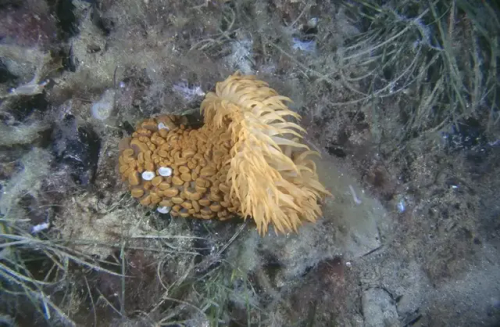
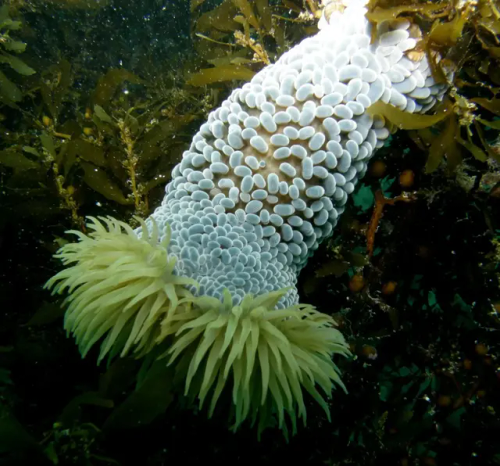


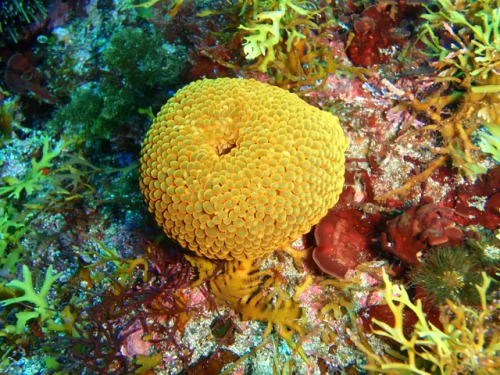



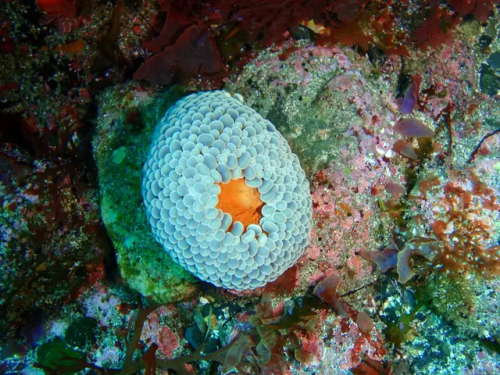
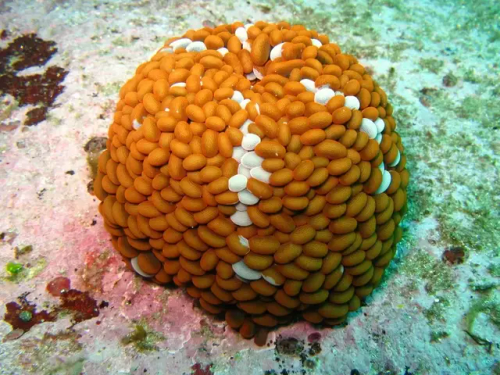




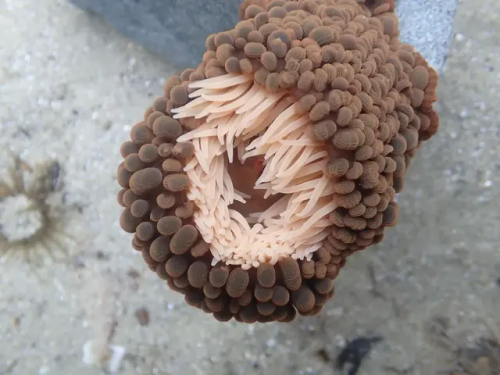



PHLYCTENACTIS TUBERCULOSA.
Phlyctenactis tuberculosa, широко известная как блуждающая морская актиния или плавающая актиния, является видом морских анемонов семейства актиний. Она произрастает в мелководных морях вокруг Австралии и Новой Зеландии, а также встречается в Чили. Впервые была описана французским зоологом Жаном Рене Константом Куа и французским натуралистом Жозефом Полем Геймаром. Они были военно-морскими хирургами французского флота, которые собрали значительные коллекции различных организмов во время путешествий.
Эта актиния покрыта пузырчатыми мешочками и бывает разных цветов: от коричневато-оранжевого, лилового, светло-серого до коричневого. Щупальца светлее и могут быть бледно-желтого, серого, коричневого или оранжево-желтого цвета. Она вырастает до максимального размера 15 сантиметров (6 дюймов) в диаметре ,со стеблем, который может достигать 25 сантиметров (10 дюймов) в длину. В течение дня блуждающая морская актиния остается скрученной вместе, выглядя как шар из печеных бобов.
Этот ночной вид актинии, обитает на открытых побережьях и среди защищенных коралловых рифов на глубине до 35 метров. Он прикрепляется к камням, морским травам и водорослям, но может отцепить свой педальный диск и обычно дрейфует по морскому дну. Плавающая актиния передвигается по морскому дну, ползая с помощью своего базального диска, а ночью взбирается на морские травы или водоросли, чтобы найти лучшее место для перехвата проплывающей мимо добычи.
Странствующий морской анемон ядовит, и прикосновение к щупальцам может вызвать болезненный укус. Пловцам рекомендуется избегать прикосновений к анемону и надевать защитную одежду.
Phlyctenactis tuberculosa, commonly known as the wandering sea anemone or floating anemone, is a species of sea anemone in the family Anemoneidae. It is native to shallow seas around Australia and New Zealand, and is also found in Chile. It was first described by the French zoologist Jean René Constant Coix and the French naturalist Joseph Paul Gaymard. They were naval surgeons in the French Navy who made significant collections of various organisms during their voyages.
This anemone is covered in bladder-like sacs and comes in a variety of colors, from brownish-orange, lilac, light gray, to brown. The tentacles are lighter and can be pale yellow, gray, brown, or orange-yellow. It grows to a maximum size of 15 centimetres (6 in) in diameter, with a stalk that can reach 25 centimetres (10 in) in length. During the day, the wandering sea anemone remains coiled together, looking like a ball of baked beans.
This nocturnal species of sea anemone lives on exposed coastlines and among sheltered coral reefs at depths of up to 35 metres (115 ft). It attaches itself to rocks, sea grasses and seaweed, but can detach its pedal disc and usually drifts along the sea floor. The floating anemone moves along the sea floor by crawling with its basal disc, and at night climbs onto sea grasses or seaweed to find the best place to intercept passing prey.
The wandering sea anemone is venomous, and touching its tentacles can cause a painful sting. Swimmers are advised to avoid touching the anemone and to wear protective clothing.
Источник://t.me/+E4YBiErj0A8wOGUy,/collections.museumsvictoria.com.au/species/8618,/atlasoflife.org.au/creaturefeatures/2021/01/07/an-early-brief-snorkel,/www.reeflex.net/tiere/8754_Phlyctenactis _ tuberculosa.htm,//www.realmonstrosities.com/2015/01/wandering-sea-anemone.html,//shapeandtheidea.wordpress.com /2015/10/11 / wandering-anemone/,/animalia.bio/index.php/phlyctenactis-tuberculosa.




















Мадагаскарская комета или Сатурния мадагаскарская (Argema mittrei) - Эту представительницу семейства павлиноглазок в природе можно увидеть только на африканском острове, именем которого она и названа. Также бабочку называют «сатурния-комета», «бабочка-комета», «мадагаскарская лунная бабочка», «павлиноглазка-комета», «мадагаскарская комета».
Мадагаскарская сатурния имеет яркий желтый цвет, на каждом из крыльев есть коричневые круги с черными точками посередине. Вершины крыльев украшены темно-коричневыми пятнами. По крыльям проходит тонкий красновато-коричневый волнистый узор. Свое необычное название сатурния-комета получила благодаря оригинальному внешнему виду: на задних крыльях у нее есть красные выросты, напоминающие след летящей кометы, они помогают ей балансировать во время полета.
Мадагаскарская сатурния относится к гигантским бабочкам, размах ее крыльев составляет 14-18 см. Брюшко крупное, бочкообразное. У самца перистые и крупные усики. Самцы и самки этого вида тропических бабочек различаются. Самка мадагаскарских сатурний больше, у нее более широкие и округлые крылья, а выросты на задних крыльях чуть короче – 8 см, в то время как у самцов они достигают длины 13 см.
У сатурнии-кометы нет развитого ротового аппарата, поэтому она ничем не питается.Бабочка расходует пищевые запасы, собранные ей еще в том момент, когда бабочка была на стадии личинки. Сатурния комета активны в темное время суток. Их можно встретить вечером или ранним утром. Днем же насекомые сидят на одном месте. Необычный внешний вид имеют и гусеницы сатурнии-кометы: тело личинки покрыто зелеными чешуйками. Гусеницы питаются тропическими растениями: уапакой, скумпией, марулой и т. п. Стадия личинки долгая: она может длиться до двух месяцев. Окукливаются в белоснежных пористых коконах. После стадии куколки появляется взрослая бабочка. Наслаждаться ее великолепным видом можно недолго, т. к. живет сатурния-комета всего 4-5 дней. Целью имаго является оставить потомство. На Мадагаскаре успешно разводят этих великолепных бабочек на особых фермах.
Madagascar Comet or Saturnia madagascarensis (Argema mittrei) - This representative of the peacock-eye family can be seen in nature only on the African island after which it is named. The butterfly is also called "Saturnia comet", "comet butterfly", "Madagascar moon butterfly", "peacock-eye comet", "Madagascar comet".
The Madagascar Saturnia has a bright yellow color, on each of the wings there are brown circles with black dots in the middle. The tops of the wings are decorated with dark brown spots. A thin reddish-brown wavy pattern runs along the wings. Saturnia comet got its unusual name due to its original appearance: on the hind wings it has red growths resembling the trail of a flying comet, they help it balance during flight.
The Madagascar Saturnia is a giant butterfly, its wingspan is 14-18 cm. The abdomen is large, barrel-shaped. The male has feathery and large antennae. Males and females of this species of tropical butterflies differ. The female of the Madagascar Saturnia is larger, it has wider and rounder wings, and the outgrowths on the hind wings are slightly shorter - 8 cm, while in males they reach a length of 13 cm.
The Saturnia-cometa does not have a developed mouth apparatus, so it does not feed on anything. The butterfly uses up food reserves collected by it back when the butterfly was at the larval stage. Saturnia cometa are active at night. They can be found in the evening or early morning. During the day, the insects sit in one place. The caterpillars of the Saturnia-cometa also have an unusual appearance: the body of the larva is covered with green scales. Caterpillars feed on tropical plants: uapaca, smoke tree, marula, etc. The larval stage is long: it can last up to two months. They pupate in snow-white porous cocoons. After the pupa stage, an adult butterfly appears. You can not enjoy its magnificent appearance for long, because the Saturnia-cometa lives only 4-5 days. The goal of the imago is to leave offspring. In Madagascar, these magnificent butterflies are successfully bred on special farms.
Источник: //domvred.ru/madagaskarskaya-saturniya/,//x.com / flyamur/status/1343837885779374080,/ucrazy.org/animals/1422804820-madagaskarskaya-kometa.html,/fotkiflo.ru/zhivotnye/saturniya-madagaskarskaya,//ekogradmoscow.ru/eko-blog/umnyj-dom-s-aleksandrom-perepechko/madagaskarskaya-kometa-vasilij-klimov-i-ego-okno-v-prirodu,//www.mirkrasiv.ru/nature/madagaskarskaja-kometa-argema-mittrei-krupneishaja-babochka-planety.html, /pikabu.ru/story/videli_takikh_babochek_9580589.






























Азорские острова - край вулканов и гортензий.
Название островов, скорее всего, происходит от устаревшего португальского слова «azures», что буквально означает «голубые». Синего цвета и его оттенков здесь и впрямь много, особенно в мае и начале июня, когда острова покрываются цветущими гортензиями. Жители острова Флорес даже ходят на работу через поля диких гортензий. Азорские острова – это рай для тех, кто любит природу.
The Azores are a land of volcanoes and hydrangeas.
The name of the islands most likely comes from the obsolete Portuguese word "azures", which literally means "blue". There really is a lot of blue and its shades here, especially in May and early June, when the islands are covered with blooming hydrangeas. Residents of the island of Flores even walk to work through fields of wild hydrangeas. The Azores are a paradise for those who love nature.
Источник://t.me/krasivye_mesta_turizm, /ybis.ru/ostrova/azorskie-ostrova-gortenzii,/miss-hohotyn007.livejournal.com /1110530.html, /oir.mobi/704214-azorskie-ostrova-gortenzii.html,/ybis.ru/ostrova/ azorskie-ostrova-gortenzii,/ru.pinterest.com/pin/656047870752312063/, /aaavolkov.livejournal.com/8175.html,klau.club/974-azorskie-ostrova.





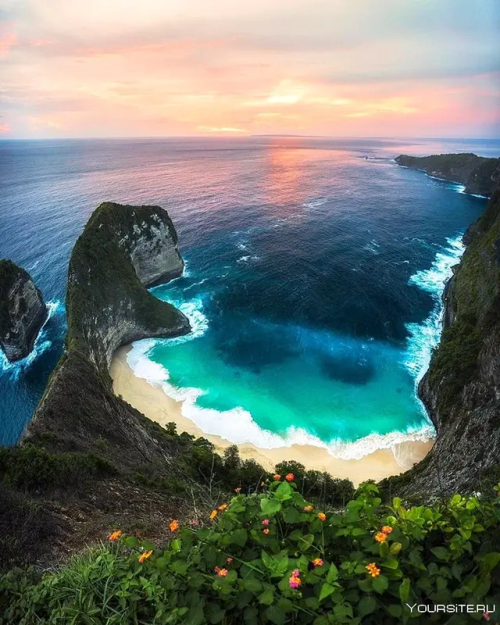




















Чарующий закат на пляже Келинкинг (Kelingking Beach). Цвет и красота неба над Бали на острове Нуса Пенида.
Enchanting sunset on Kelingking Beach. The color and beauty of the sky over Bali on the island of Nusa Penida.
Источник:/www.tripadvisor.ru/Attraction_Review-g2538506-d12396108-Reviews-Kelingking_Beach-Nusa_Penida_Bali.html, //zerotrip.ru/2020/05/08/nusa-penida-nusa-penida-ostrov-mechta/, //photopole.ru/krasivye-kartinki/samyy-krasivyy-okean, /wallpaperscraft.ru/download/okean_ostrov_zakat_131191/938x1668, /www.goodfon.ru/landscapes/wallpaper-kelingking-sunset-nusa-penida-bali.html,/baliforum.ru/p/samye-krasivye-baliyskie-zakaty, /ru.35photo.pro/photo_7862981/.





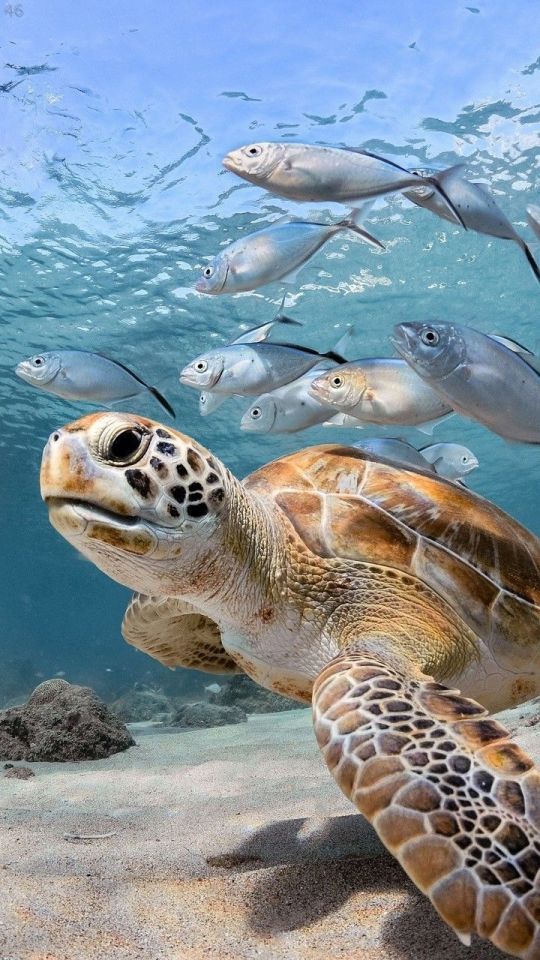


















Бисса (лат. Eretmochelys imbricata) — один из редких видов морских черепах, которому грозит полное исчезновение. По внешнему виду ее можно перепутать с зеленой черепахой, от которой бисса отличается только меньшими размерами и весом: взрослая особь имеет длину тела от 60 до 90 см при массе около 45-55 кг. Панцирь биссы сверху коричневый с красивым желто-пятнистым рисунком и имеет сердцевидную форму. Ещё одна особенность внешнего вида - заострённый, похожий на клюв кончик морды.
Второе название биссы — настоящая каретта — означает, что именно эта черепаха дает самые ценные, "настоящие" роговые пластинки, из которых изготавливают различные сувениры: гребни, шкатулки и прочие мелочи. Очень жаль, что любовь человечества ко всяким безделушкам привела вид к такому плачевному состоянию. Впрочем, мясо биссы тоже ценится в некоторых странах. Разумеется, нелегально, так как настоящая карета уже давно внесена в Международную Красную Книгу и находится под охраной различных организаций. При этом гурманов вовсе не пугает тот факт, что деликатес может оказаться ядовитым из-за пищи, которую сама черепаха ела накануне.
Встретить ее можно в Атлантическом и Тихом океанах: ареал настоящей каретты простирается от умеренных вод северного полушария до умеренных вод южного. Вот только гнездится бисса исключительно в тропических широтах. Населяет преимущественно скалистое мелководье, коралловые рифы, лагуны и заливы с мангровыми берегами. Мелкие прибрежные воды, заливы и устья рек с илистым или песчаным дном — обычные места обитания биссы. Она держится чаще в тех местах, где подводной растительности мало. Настоящие каретты всеядны, но отдают предпочтение животной пище- их рацион составляют бентосные беспозвоночные, медузы, анемоны и морские губки, причем только определенных видов, а некоторые из них и вовсе ядовиты для других существ.
Еще один интересный факт этот вид черепах способен светиться в темноте.
The hawksbill turtle (Latin Eretmochelys imbricata) is one of the rare species of sea turtles that is threatened with complete extinction. In appearance, it can be confused with the green turtle, from which the hawksbill differs only in its smaller size and weight: an adult has a body length of 60 to 90 cm with a weight of about 45-55 kg. The hawksbill shell is brown on top with a beautiful yellow-spotted pattern and has a heart-shaped shape. Another feature of its appearance is the pointed, beak-like tip of the muzzle.
The second name of the hawksbill turtle is the real caretta, which means that this particular turtle produces the most valuable, "real" horn plates, from which various souvenirs are made: combs, boxes and other little things. It is a pity that humanity's love for all sorts of trinkets has led the species to such a deplorable state. However, hawksbill meat is also valued in some countries. Of course, illegally, since the real carriage turtle has long been included in the International Red Book and is protected by various organizations. At the same time, gourmets are not at all afraid of the fact that the delicacy may be poisonous due to the food that the turtle itself ate the day before.
You can meet it in the Atlantic and Pacific oceans: the range of the real carriage turtle extends from the temperate waters of the northern hemisphere to the temperate waters of the southern. But the hawksbill nests exclusively in tropical latitudes. It inhabits mainly rocky shallow waters, coral reefs, lagoons and bays with mangrove shores. Shallow coastal waters, bays and river mouths with a muddy or sandy bottom are the usual habitats of the hawksbill. It is more often found in places where there is little underwater vegetation. True carettas are omnivorous, but prefer animal food - their diet consists of benthic invertebrates, jellyfish, anemones and sea sponges, but only of certain species, and some of them are completely poisonous to other creatures.
Another interesting fact is that this species of turtles can glow in the dark.
Источник:://more.fandom.com/ru/wiki/Бисса,/ornella.club/15248-morskaja-cherepaha-bissa.html,/zoo-ekzo.ru/node/6163, //www. zoopicture.ru/bissa/,animals.pibig.info/6018-cherepaha-karetta.html, /ru.pinterest.com/pin/68737846851/.